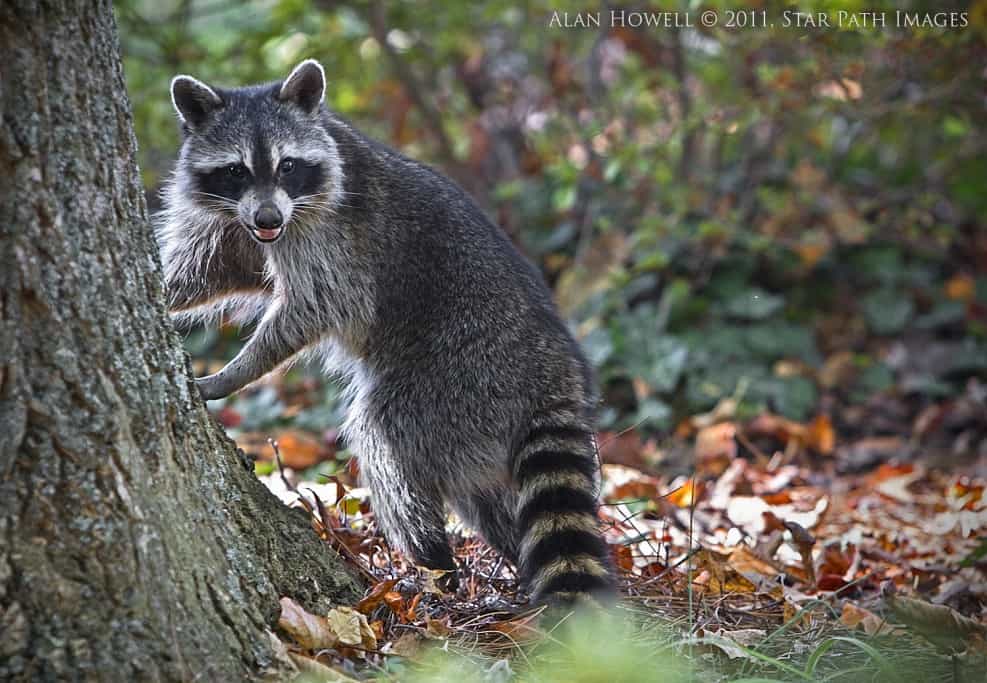Why is Homo sapiens becoming an increasingly urban species? For the same simple reasons as raccoons (Procyonis lotor), it seems—more housing options and better restaurants (easy access to French fries and Dunkin Donuts, in particular).
The more difficult question to answer is this: As we convert forests and pastures into prefabs and flower shops, are we accidentally creating a nice place for raccoons to live… or building bigger, better, smarter raccoons?
Raccoon Nation, an excellent documentary on urban raccoons, recently aired in the U.S. on the PBS “Nature” series, and in Canada on the CBC News Network series “The Nature of Things with David Suzuki.” The full hour-long episode, along with interesting behind-the-scenes extras, can be viewed online.

Using high-def and night-vision cameras, radio collars, microchips, and GPS tracking systems, filmmakers followed a female and her family living in Toronto—raccoon capital of the world—for six months. The result is a first peek at lives that are both hidden and in plain sight; at the margin, but also out back in the yard, under the shed, up in the attic, and down the chimney.
This is a creature that rises to the challenges of city living, and thrives. It also has increasing commonality with its human neighbors. One example: Americans now weigh an average of 25 pounds more now than in 1960, and are at a higher risk for developing diabetes, hypertension (high blood pressure), and heart disease. Dumpsters, trashcans, gardens, pet food bowls, bird feeders, and deliberate hand-outs (in the form of Oreos®, Doritos®, and Twinkies® literally offered from one’s hand) have had a similar effect on urban raccoons, who are now prone to the same weight-related maladies.
All our efforts to thwart the damage they cause could come back to bite us. With food readily available, and only a single significant predator (the automobile), raccoons have plenty of time on their hand-like paws for mind games. We may be inadvertently helping natural selection along, facilitating greater brain development and problem solving skills. According to one biologist who has studied the species for the past quarter-century, the result could be an über-waschbär.
For more on raccoons and other urban species, visit Kieran’s blog, Next-Door Nature. Thanks to Alan Howell at Star Path Images for granting permission to use his raccoon photo.
Kieran Lindsey
Kieran Lindsey loves looking for wild things in all the wrong places... so she became an urban biologist. Her quest to entice others to share this passion led to flirtations with (gasp!) the media—as a columnist for the Houston Chronicle; as host of KUNM-FM’s Wild Things; as producer of an Emmy® winning wildlife documentary; and at her Next-Door Nature blog. Kieran has way too much fun as official Animal-Vehicle Biologist for NPR's Car Talk, and she isn’t ashamed to admit it.

Leave a Reply